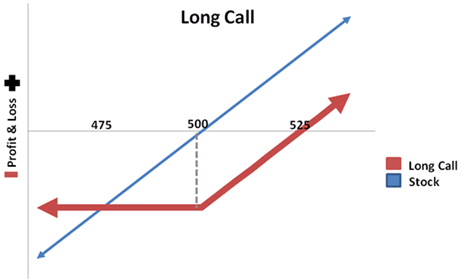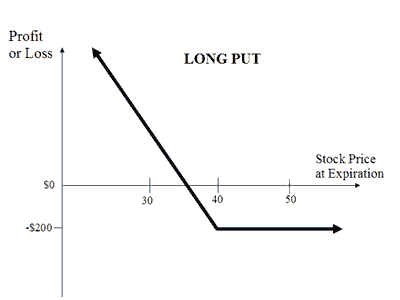Buying Call Options
Post on: 14 Июнь, 2015 No Comment

An Example of Buying Call Options Using General Electric
In our example, I’ll choose General Electric because it’s one of the largest companies in world. Again, this is not a recommendation; I am merely selecting a massive multi-billion dollar conglomerate to make the illustration easier.
Take a look at a 10 years chart for GE’s common stock (click the image to enlarge):
Before the meltdown, GE hadn’t traded below $30 per share for any considerable amount of time. In fact, the lowest it appears to have gotten is $23+ back in 2003. Unlike other companies in the meltdown, General Electric maintains that they have the resources to rebuild internally and expect to be out of the grips of the credit crisis within two years according to recent comments by CEO Jeffrey Immelt. The stock price currently stands at $13.39 per share.
Let’s say you had allocated some money for an investment in GE. If you were to buy the stock outright, you could purchase 4,000 shares for $53,560. If the stock goes back up to $25, your position would be worth $100,000. If it goes back up to $30, it would have a market value of $120,000. If it goes back up to $40, your stock would be worth $160,000. Along the way, you will collect some dividend income, as well. This is certainly a great buy if you believe that the company is undervalued and you are extremely bullish on the stock.
Buying Call Options or LEAP Options Instead of the Stock
If you were willing to take some substantial risk, however, you could buy a special type of call option on GE known as a LEAP (which is merely an acronym for Long-Term Equity Anticipation Securities). For greater risk, you can get a much higher payoff should GE’s stock increase in price, as you believe it will.
As of this moment, you can buy the right to acquire General Electric stock at $15.00 per share any time between now at January 22 nd. 2011 (which is $1.61 higher than the current stock price). That is 606 days in the future. In exchange for buying these call contracts, you have to pay the person who created the contract $2.31 per share in premiums. In other words, for the same $53,560+/- investment, instead of buying 4,000 shares of General Electric, you could buy 232 call option contracts on GE stock with a $15.00 strike price expiring on January 22 nd. 2011. For this right, you agree to pay $2.31 per share in premiums.
In other words, by buying call options you now have the legally enforceable right to buy 23,200 shares of General Electric (remember – each call contract covers 100 shares so 232 contracts would be 232 x 100 shares = 23,200 shares total) at $15 per share. You have this right between now and January 22 nd. 2011. You paid $2.31 per share, or $53,592. So, you have the same amount of money invested that you would have if you’d just bought the 4,000 shares of GE outright.
Here’s how the transaction would look:
When (if) General Electric hits $15.00 per share, you have the right to exercise your options. However, since you paid $2.31 per share for the contract, your “break-even point” is $17.31 ($15.00 strike + $2.31 premium = $17.31 breakeven). That is, if General Electric trades at $17.31 in the next 606 days, your options will be at breakeven. You could exercise the contract and get out of them without losing any money, receiving your entire $53,592 investment back and washing your hands of the whole deal.

Anything above that is where you make your money. For instance, if GE were to go to $25, you would be “in the money” by $10. That is, the stock is at $25 on the New York Stock Exchange, but you have the right to buy it at $15 because of your calls. You could exercise your contracts, buying the stock at $15 and turning around, immediately selling them at $25, pocketing the $10 difference. If you did this on all 232 contracts, or the 23,200 shares they controlled, you would have $232,000 when the transaction closed. You originally invested $53,592 so $178,408 of this was profit. Compare that to the $100,000 your position would be worth if you had just bought the stock and watched it go to $25 per share. In that case, your profit was $46,440 and you got your original investment of $53,560 back.
The bottom line: If you’re right, and the stock goes to $25, your money grows to $232,000 through the options versus $100,000 through the stock. You end up with an extra $132,000 on the same price movement in General Electric.
This disparity is extreme the higher the stock moves. If GE had gone to $40, your position would have been worth $580,000 instead of $160,000 by buying the shares outright – a difference of $420,000!
Of course, there is no such thing as a free lunch. The greater return is the result of higher risk and this is true when you buy call options. If General Electric never exceeded $15 per share, and all 606 trading days passed, those options would expire worthless. You would lose the entire $53,592 investment. It would go to $0 because the contracts expired. That’s why this strategy is not appropriate for most investors. In this case, the question would be: Do you believe the global economy will have recovered 1.66 years from now by January 2011 and, if so, do you think that will extend to the stock price of General Electric? If you are willing to back that conviction with your money, the payoff can be enormous – in this case, turning $53,592 into anywhere from $232,000 at $25 per share for GE to $580,000 at $40 per share for GE.
We have a highly selected, extremely scrutinized collection of LEAP call options on stocks that we think are undervalued. We are fully aware, and willing, to take the risk that if the world were to fall off a cliff, or experience another September 11 th. they may expire worthless. However, given the risk-reward tradeoff, the amount of money we have working for us in more conservative strategies, and our collection of growing Internet businesses, we are willing to take this risk. If they work out, we will make hundreds of thousands of dollars in profit. If they don’t, we will lose money. We acknowledge, and accept, that. It’s a relatively small part of our overall strategy with the potential for big gains.














